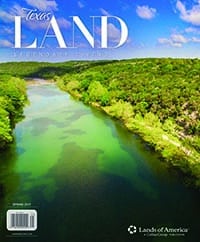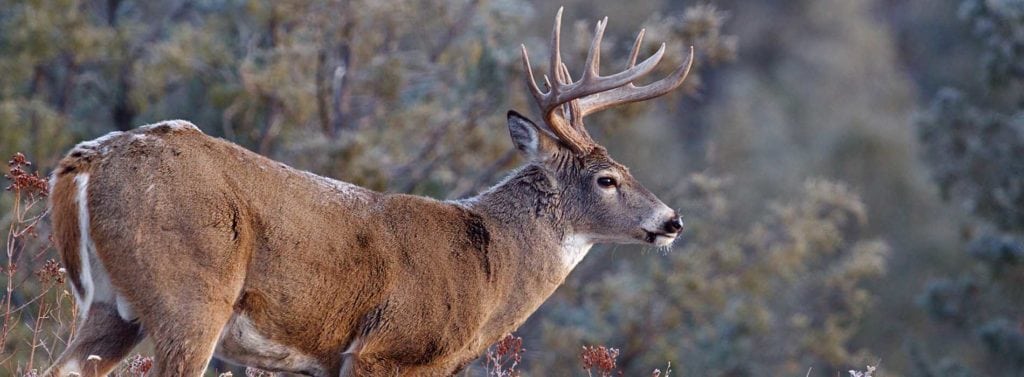
“Sustainable” is a word often used in our current society. Consumers want their food to come from sustainable sources and the energy required to operate their homes and automobiles to be generated from sustainable resources. They want native plants and animals to remain sustainable. The problem is that everyone seems to have a different definition for the word.
Most industries are working diligently to meet customer demands by defining sustainable and to ensure that their products and services conform to the definition. One group working on the concept is range managers and associated user groups. The first annual Sustainable Rangelands Symposium was held in Lubbock during June, 2016. One of the presentations was titled, “Sustainable Rangelands for Big Game Production and Habitat Management” delivered by Dr. Warren Conway, Texas Tech University. This article is written from Dr. Warren’s presentation.
Warren began by asking the question: “What does ‘sustainable’ mean for big game animals?” He suggested that maintenance or endurance in perpetuity is inherent in most definitions of sustainable. The reality is that all definitions are somewhat subjective, extremely personal and economic.
Sustainable might be viewed as ability to meet needs of the present human generation without compromising ability of future generations to meet their needs. Wildlife requires food, water, cover and space. Humans have the same needs plus social, health, recreational, spiritual, economic, and emotional.
Develop goals
Sustainability is achieved with a specific set of goals for ranch operation. The goals should ensure that the property is managed in a profitable manner without considerable inputs. From a big game perspective, enterprise options are native wildlife, exotics or a combination of the two. Native wildlife includes mule deer, white-tailed deer, pronghorn antelope, bighorn sheep and javelina. Under the Texas Property Tax Code, exotics are considered domestic wildlife or livestock and include animals such as axis deer, fallow deer, nilgai, blackbuck and aoudad. Other sources of income should also be considered such as cattle, sheep, goats, native seeds, wood, and other possibilities.
Identify target markets when writing goals for a wildlife ranch. Possibilities might include trophy hunting, photography, camping, youth education or food products. In selecting an enterprise, it is important to determine whether consumers are willing to pay for what you intend to sell. If your product or service doesn’t meet the needs or desires of a group of consumers, it is clearly not sustainable nor profitable.
Consumers are willing to pay greater sums for products or opportunities considered socially or environmentally responsible. Sustainability is often a core element of consumer desire. The question to address in drafting goals is: What marketing approach will capitalize on fulfilling their desire?
There is no cookbook to use as a guide in writing strategic goals. Managers, owners and entrepreneurs need to balance goals with the ability to reach them. Approach strategic goals in an adaptive manner where ecological, social and economic elements of rangeland management decisions are balanced. Use expert input because experience counts.
A strategic approach to developing goals involves gathering data to answer the following five groups of questions:
- What do you currently have? What are current conditions?
- What do you want? What conditions will occur in the future?
- Who else might also want the same products, goods, or services? How much are they willing to pay for them?
- How do you find these consumers? What is your unique marketing strategy?
- Can you reach your goals without a loss? How can you make it sustainable in the long and short term?
Sustainable habitat
The word, “habitat” is useless without qualifying it with the species or group of species that will utilize it. The first component of wildlife-habitat-relationships is space. How much room is available to use or manage? What are space requirements for the game species of interest?
A question that needs addressing in the strategic goals is whether the property will be high-fenced or low-fenced. Does a high-fence fit the sustainability scenario? An eight-foot high fence costs approximately $15,000 to $50,000 per mile and these costs need to be recovered from revenue. Do you have enough space for a high-fence? A white-tailed buck has a home range of 500 to 1,000 acres. When thousands of acres are enclosed with high-fence, space becomes less of an issue.
If space requirements are met, evaluate the amount of available wildlife food consumed by your focal species. Food sources to consider might include browse (brush), forbs (weeds), grass, grubs, vegetation mixtures and mast (fruits, acorns and nuts).
Land production is governed by soil types, moisture regimes and plant community structure. Ability to identify these habitat characteristics allow the wildlife manager to estimate food production under good, medium or poor environmental conditions. The amount of available wildlife food determines the number of animals that the land can sustain. This is known as carrying capacity.
If a ranching business is truly sustainable, the manager thinks in terms of the whole system and doesn’t reduce the operation into compartmentalized areas.
Determining carrying capacity for wildlife is often difficult and complicated. Wildlife may switch food items, either from desire or need. It is hard to know the total number or density of individual animals in an area. Our ability to control movement and habitat use by wildlife is a lot less precise than with domestic livestock. Environmental conditions and seasonal food demands make the job more challenging.
Sustainable big game management in rangeland is based on the focal animal species, space and potential habitat. Another factor to consider is whether the wildlife will coexist with livestock. If the different types of animals compete for food, then this is a consideration when calculating carrying capacity.
Often the primary need in habitat improvement is stocking rate reduction. Stocking rate is the number of animal units per acre. In the short term, stocking rate reduction reduces income because of less units to market. Long term, these costs are exceeded in added income due to healthier individuals, more trophy animals and potential for raising the costs for customer opportunities.
Operational paradigm
Sustainable rangeland operations require adaptation, but conservatism in management approaches. Managers need to think in terms of optimizing sustained yield of offered goods and services. Don’t concentrate on maximizing production and profits every year, but seriously address long term goals. Effective managers adapt to market demands through development of a palatable marketing strategy that appeals to potential consumers.
If a ranching business is truly sustainable, the manager thinks in terms of the whole system and doesn’t reduce the operation into compartmentalized areas. An example is integration of human and ecologically sustainable systems and not treating them as individual parts. Their interaction as individual parts can cause a break-down of the sustainable system. Integration of ecological and socio-economics factors is important for planning, strategic development, implementation, marketing and recursive evaluation of the operation.
This article appears in the spring 2017 issue of Texas LAND magazine. CLICK HERE to read more and subscribe to future issues.

